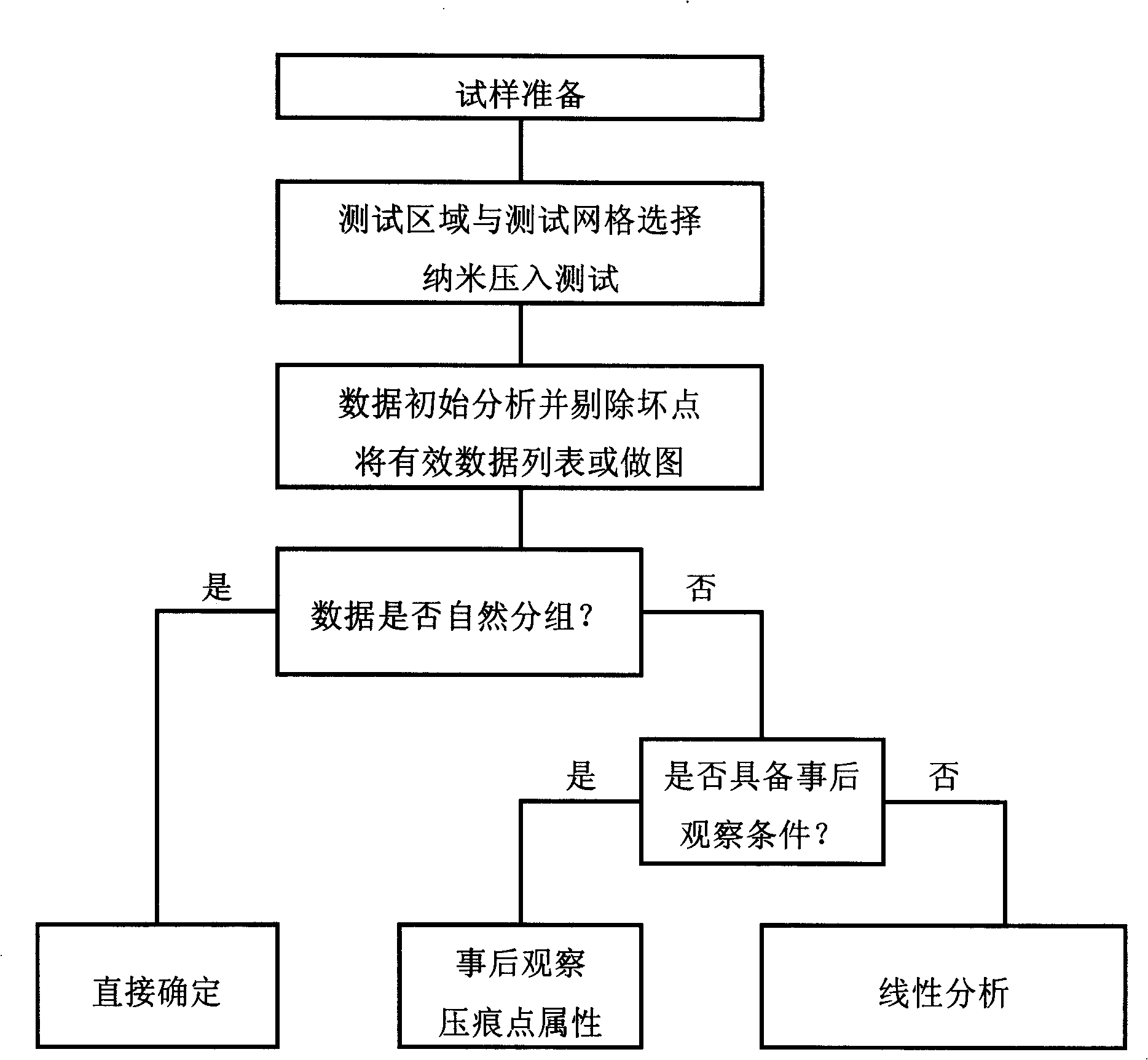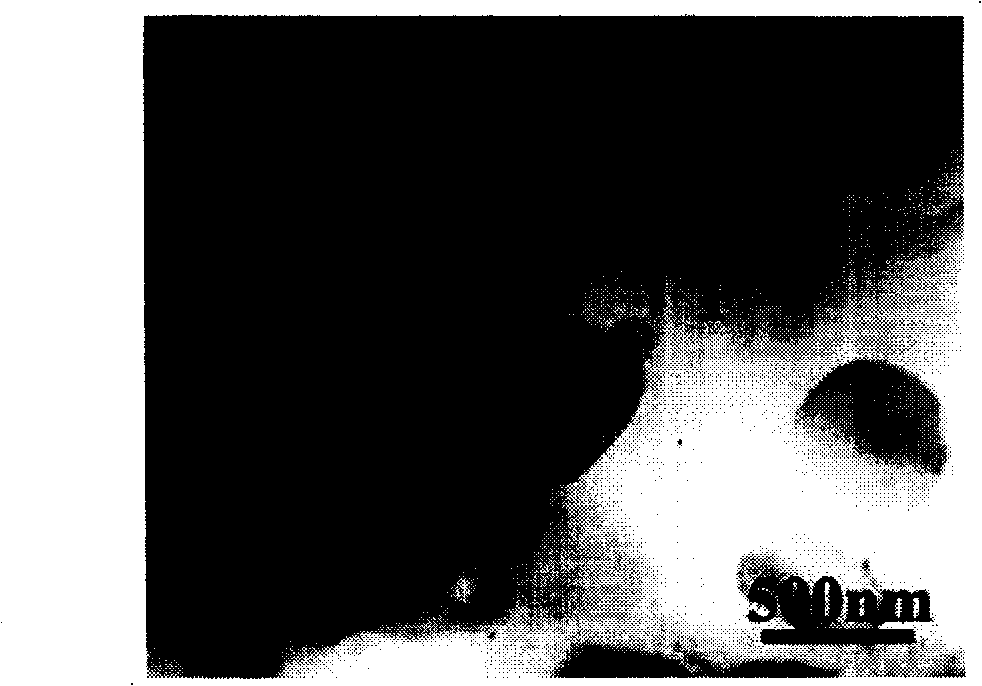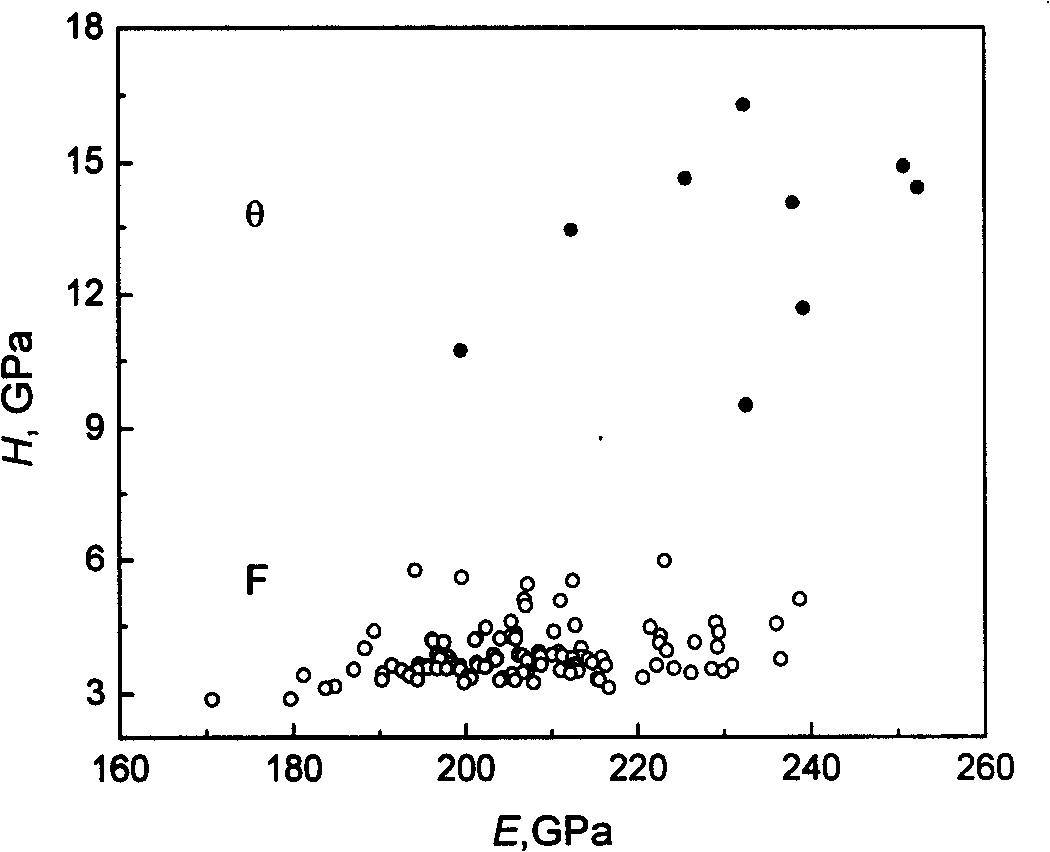Method for determining microscopic mechanics performance of each consist composing phase in polyphase material
A technology of micromechanics and multiphase materials, which is applied in the field of measurement of micromechanical properties of each constituent phase in multiphase materials, and can solve problems such as no data point grouping
- Summary
- Abstract
- Description
- Claims
- Application Information
AI Technical Summary
Problems solved by technology
Method used
Image
Examples
Embodiment 1
[0060] The multi-phase material to be tested is spheroidized annealed GCr15 bearing steel, and its microstructure is as figure 2 As shown, spherical carbides (cementite, θ) are distributed in the matrix ferrite phase (F), and the average diameter of the particles is 0.5 μm.
[0061] The specific scheme of nanoindentation test is shown in Table 1. The 119 effective data points obtained are listed in Table 2 in order of hardness from high to low. It can be seen that the first 9 data points form a group of their own (in the thick line box in the upper left corner of the table), and their hardness is significantly higher than the other data points. If the above 119 valid data are plotted in a rectangular coordinate system, we will get image 3 E-H scatter plot shown. It can be seen more intuitively that there are indeed 9 data points in a group (upper part of the figure), and their hardness is significantly higher. Because m min =9>5, the aforementioned nanoindentation test schem...
Embodiment 2
[0069] The multi-phase material to be tested is as-cast ferritic-austenitic duplex stainless steel, and its microstructure is as Figure 4 As shown, a coarse dendritic austenite phase (A) is distributed in the matrix ferrite phase (F).
[0070] The specific scheme of the nanoindentation test is shown in Table 1, and the scatter diagram of the 228 effective data points obtained by the test is shown in Figure 5 . It can be seen that these data points are not grouped naturally, but because the steel is a cast structure, the dendrites are very coarse (see Figure 4 ). This is easy to judge one by one through optical microscope observation ("post observation") after the press-in test Image 6 The composition phase corresponding to each indentation point in the Figure 5 The composition phase corresponding to each data point in the Figure 7 . Because m min =82>5, the aforementioned nanoindentation test scheme (see Table 1) is effective, and the test results (see Table 3) have statis...
Embodiment 3
[0071] Example 3 (the linear analysis result of Example 2):
[0072] Since the data points are not grouped naturally, the post-observation method is used in Example 2 ( Image 6 ) Determine the correspondence between data points and each component phase ( Figure 7 ). analysis Figure 7 , If you draw a straight line to divide the data points into two groups, most of the data points on the left of the dividing line correspond to the austenite phase (A), and most of the data points on the right correspond to the ferrite phase ( F). This means that in the absence of conditions for "post-observation", linear analysis can be used to approximate the correspondence between data points and each component phase. When solving the dividing line equation shown in formula (1), it is necessary to ensure that the total number of misjudged data points (that is, the erroneous correspondence between the data points and the constituent phases) is minimized. From this, determine Figure 7 The line...
PUM
| Property | Measurement | Unit |
|---|---|---|
| diameter | aaaaa | aaaaa |
Abstract
Description
Claims
Application Information
 Login to View More
Login to View More - R&D
- Intellectual Property
- Life Sciences
- Materials
- Tech Scout
- Unparalleled Data Quality
- Higher Quality Content
- 60% Fewer Hallucinations
Browse by: Latest US Patents, China's latest patents, Technical Efficacy Thesaurus, Application Domain, Technology Topic, Popular Technical Reports.
© 2025 PatSnap. All rights reserved.Legal|Privacy policy|Modern Slavery Act Transparency Statement|Sitemap|About US| Contact US: help@patsnap.com



